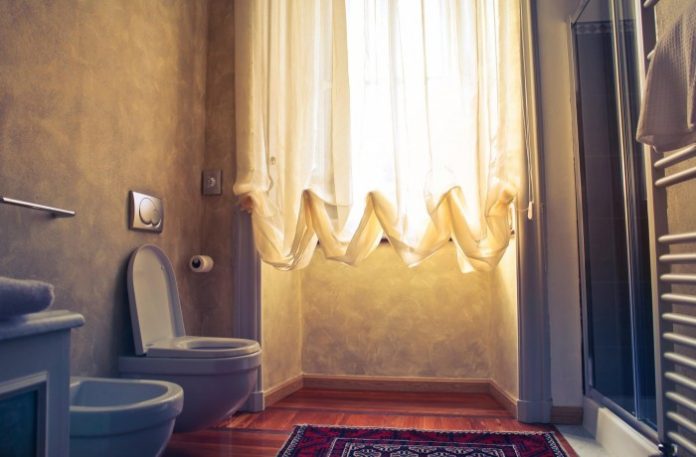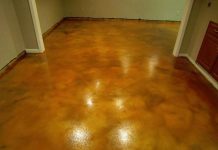You can’t deny nature’s call. Fortunately, you don’t have to dig a hole or hide behind foliage to do your business. It’s highly likely that there’s a convenient toilet in your home. Standard tank toilets and tankless toilets are essential fixtures in every house, perhaps more so than other furniture and appliances.
But like other furniture and appliances, toilets are prone to certain problems, like clogging, leakage, flushing issues and more. For home-based business owners, these issues can happen more often as the bathroom is frequently used. Commissioning a plumber can be very expensive. While some plumbing tasks you should not do yourself, it’s a good thing that the most common toilet problems have simple solutions that you can do on your own.
Prepare your rubber gloves, toilet cleaner, plunger, and other plumbing tools and get fixing.
Broken toilet seat
A wonky toilet seat can be uncomfortable to use. This can be caused by loose bolts. In which case, you can simply tighten the bolts by hand for plastic screws and with a screwdriver for metal or stainless steel ones. Be careful not to over tighten the bolts/screws; applying too much force will chip the porcelain.
If the problem is not the bolts, you may have to consider purchasing a new toilet seat. Before running to the closest hardware store near you, measure your current toilet seat (and take a picture for reference) to help find the right one. Got the new toilet seat? Remove the old one by loosening the nuts/screws and removing the bolts.
For stubborn nuts/screws, apply spray oil/lubricant and use a wrench/screwdriver. Clean the surface and remove any buildup before installing the old one. Place the new seat on the toilet, insert the bolts/screws, and tighten carefully. Check to see if the seat is secured well. And you’re done!
Clogged toilet
Clogged toilets are caused by throwing tissues, sanitary pads, tampons, and the occasional dead goldfish down the toilet drain. Luckily, most clogging problems can be solved with a trusty toilet plunger or auger.
Before unclogging the toilet, cover the surrounding area with newspapers or paper towel to catch any splashing and wear rubber gloves. Ensure that the water level is enough to submerge the plunger. Insert the plunger into the bowl, making sure to completely cover the hole. Pump the plunger swiftly and powerfully. Be patient; it may need as many as twenty or more pumps to unclog the drain completely. For best results, use a flange or accordion plunger. Once you’re done, do a test flush to check drainage.
If the plunger doesn’t work, use a toilet auger or plumbing snake. A toilet auger has a flexible coil body that can be inserted down the toilet drain to remove any debris. To use the toilet auger, gently insert the elongated body down the hole. Once you encounter any obstruction, slowly twist the handle and push the plumbing snake to break down the debris. Wait for the water to drain before you flush. For more information on unclogging toilets, check out this DIY guide on how to unblock a toilet.
If you’re tired of dealing with clogging, consider changing to an upflush macerating toilet. Its built with a motor and stainless macerating blades to break down any solid and semi-solid objects you flush down the drain.
Inadequate flushing
Despite having the most powerful flushing toilets, there are several reasons why your toilet flushes inadequately. It may be due to low water level in tank, blockage, broken handle, slack chain. To diagnose the exact problem, open the tank cover and observe what happens when you flush.
The water level should sit at least one to two inches below the overflow pipe. If it’s too low, turn the screw on top of the fill valve to adjust the water level. Check the float ball. If there’s water inside, it’s time to change it.
The chain connecting the handle to the flapper may be too loose. To adjust it, turn off the valve first and drain the tank. Unhook the pin at the end of the handle bar. Reattach the pin a little lower than its previous placement to slightly shorten the lift chain. Rehook the pin on the handle. Do a test flush; re-adjust the lift chain when needed.
Mineral deposits may be preventing water from flowing properly. Always stop and drain the water in the tank first before doing any repairs. To remove the blockage, hold or tie the flapper open and pour a cup of toilet cleaner down the flush valve. Leave it to break down the mineral deposit. Mix one-half cup of cleaning solution with equal parts water, pour down the flush valve, and shut the flapper right away. Flush the toilet to rinse and remove debris.
Loose flush handle
Flush handles can loosen with constant use. Remove the tank lid and check behind the handle to see if the nut is simple needs to be tightened or if it has corroded. To tighten the wing nut, hold and twist. If that’s not enough to fix the handle, it’s time to get a new one.
Fortunately, replacing flush handles doesn’t need rocket science. (Remember to stop and drain water in the tank!) Loosen the wing nut at the back of the handle. Unhook the lift chain from the handle bar. Remove the old handle and install the replacement. Insert the wing nut and tighten it properly. Reattach the lift chain to the new handle bar. Flush to check if the handle works then you’re done.
Phantom flusher
Not, it’s not a ghost haunting your bathroom. It’s only a leaking tank, caused by either a faulty flapper, broken fill valves, or too high water levels.
The flapper blocks the water in the tank until you’re ready to flush. Overtime, the plastic or rubber flapper can breakdown, harden, or misalign, resulting in running toilet or “phantom flusher.” In some cases, it’s the chain that’s the problem. Check inside the tank to determine the exact problem.
Before doing any repairs, shut the valve, which allows water to fill the tank and drain the water inside. For a dislocated flapper, simply fix the alignment with your hands. Remove any debris or buildup that’s blocking the flapper or causing the chain to get stuck. If it’s a broken or hardened flapper, you need to replace it with a new one.
When replacing the flapper doesn’t work, the problem may be too high water levels or a faulty valve. If it’s the former, lower the ball float to reduce the water level. Solving the latter requires more complex work, which may need the help of a professional.
Slow-filling tank
Before you jump to conclusions and call a professional, check first that the shut-off valve is fully open and your water supply is not limited. If it’s not both, open the tank lid, taking care to turn off the valve and drain the water in the tank first.
Open the cap on top of the fill valve. Cover the cap opening with your hand or a plastic cup to avoid splashing yourself and turn on the water. Let the water flow and flush out any obstructions. Check for any remaining debris. Once done, return the cap to cover the fill valve.
If there’s no clogging, there’s a high chance that the fill valve or other tubes in to be replaced. You can either try a DIY valve replacement or contact a plumber to get the job done.
Water on the floor
The mysterious water around your toilet may be due to condensation, leaking, or a crack in the bowl or toilet. A crack can temporarily be fixed with a porcelain sealer or epoxy. You need to replace the tank or bowl for a more permanent fix. Condensation can be solved by airing out the bathroom or turning on the exhaust fan for a few minutes after you use the bathroom. Or you can insulate the tank or instal an anti-sweat valve. Check the flapper too if it’s adequately sealing the opening between the bowl-tank connection.
Leaking can occur at the water inlet connection, at the flange wax seal, or at the bowl-tank connection. The first one either requires tightening the coupling nut, which secures the water supply line to the tank, or replacing the gasket and washer. To fix leaks at the wax seal, the toilet needs to be removed to install a new wax ring seal. For bowl-tank leaks, tighten the spud pipe nuts or replace the rubber tank-to-bowl washer.
Get fixing
The average plumbing services cost about $40 to $150 dollars per hour. Toilets are prone to problems. If you’re not willing (and capable of) shelling out several hundred bucks for every repair, you have to learn some plumbing basics to get through.
You don’t need to buy sophisticated tools or read the plumbing guidebook from cover to end. Understand how toilets work and familiarize its part. Despite its amazing functionality, the mechanism behind toilets are relatively simple and straightforward. You only need to be willing to learn how to solve common toilet problems and get fixing.
Find a Home-Based Business to Start-Up >>> Hundreds of Business Listings.

















































